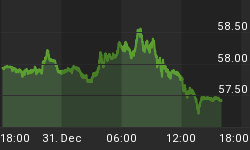Last week, on my second appearance on CNBC's Squawk Box, host Mark Haines mischaracterized my position that the U.S. could not hope to pay for imports solely through reliance on the service sector, as my advocating that the U.S. return to the equivalent of a "Buggy Whip" economy. (His analogy is a reference to the classic economic example of "creative destruction," whereby the invention of a new technology, in this case the automobile, results in the displacement of a mature industry, in this case manufacturers of whips for horse-drawn buggies.)
However, as Mark should have realized, this concept has no relevance whatsoever to America's current abandonment of manufacturing. When buggy whip companies went out of business, America did not start importing foreign made buggy whips. America stopped making buggy whips because people no longer needed them!
Today, the very same highly desirable, state-of-the-art, consumer goods that were formerly produced in America are now being produced abroad. That's a big difference between the creative destruction of manufacturers of obsolete buggy whips being supplanted by manufacturers of innovative automotive supplies. Today's example is pure destruction, with nothing being created.
For all of the worship that many analysts like Haines shower on the supremacy of the "information economy," the fact remains that what Americans really want are cars, boats, consumer electronics, clothing, furniture, appliances, toys, etc. If we do not produce these products ourselves, and do not produce enough exportable services to acquire them through trade, soon we will have to live without them. Today we are able to acquiring such goods through debt. We issue our trading partners interest baring IOU's, which means that we are not really paying for our imports. We are putting them on the equivalent of a national credit card, with the final payment still due.
The position that we can pay for our imports with services alone is completely contradicted by the facts. A $60 billion dollar per month, rapidly growing, no end in sight, trade deficit, proves that we are not producing enough exportable services to pay for our growing imports.
Similarly, Haines' assertion that the U.S. manufacturing sector can no longer compete with the low wages in China is equally absurd. In the first place, during the 1940s though the 1970s, the U.S. ran consistent trade surpluses in manufactured goods despite paying the highest wages in the world. Today, despite having a higher wage scale than the U.S., Japan enjoys a surplus in manufactured goods, including a surplus with China.
This is because manufacturing is not a function of cheap labor. If it were Africa would certainly be the manufacturing center of the world. Manufacturing is a function of capital formation, which requires savings, and freedom, which necessitates low taxes and the absence of burdensome regulations. So the real reason for America's lack of manufacturing competitive is not that Americans are paid too much, but that we save too little, and are taxed and regulated too much.
















